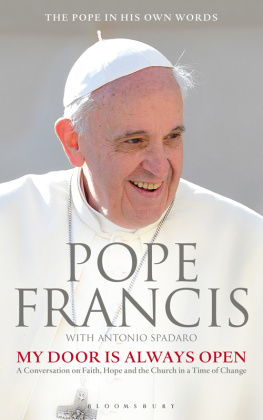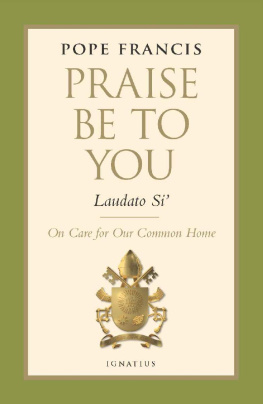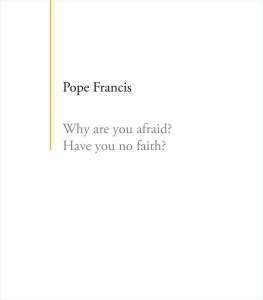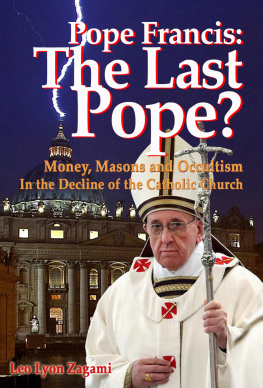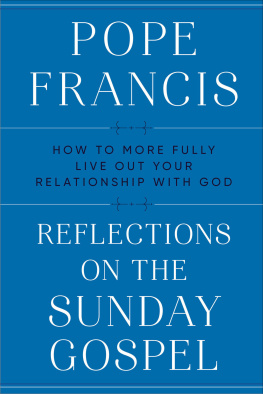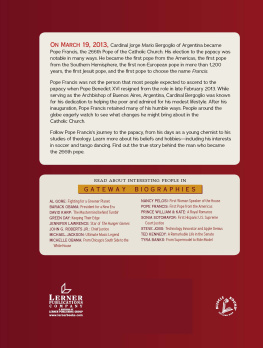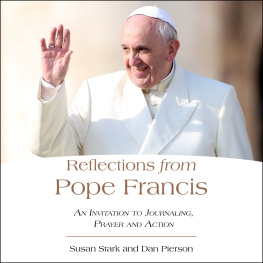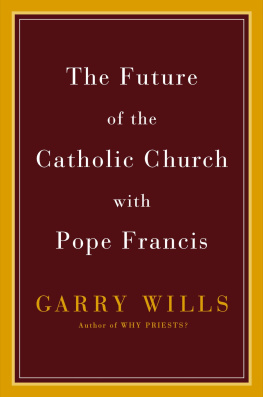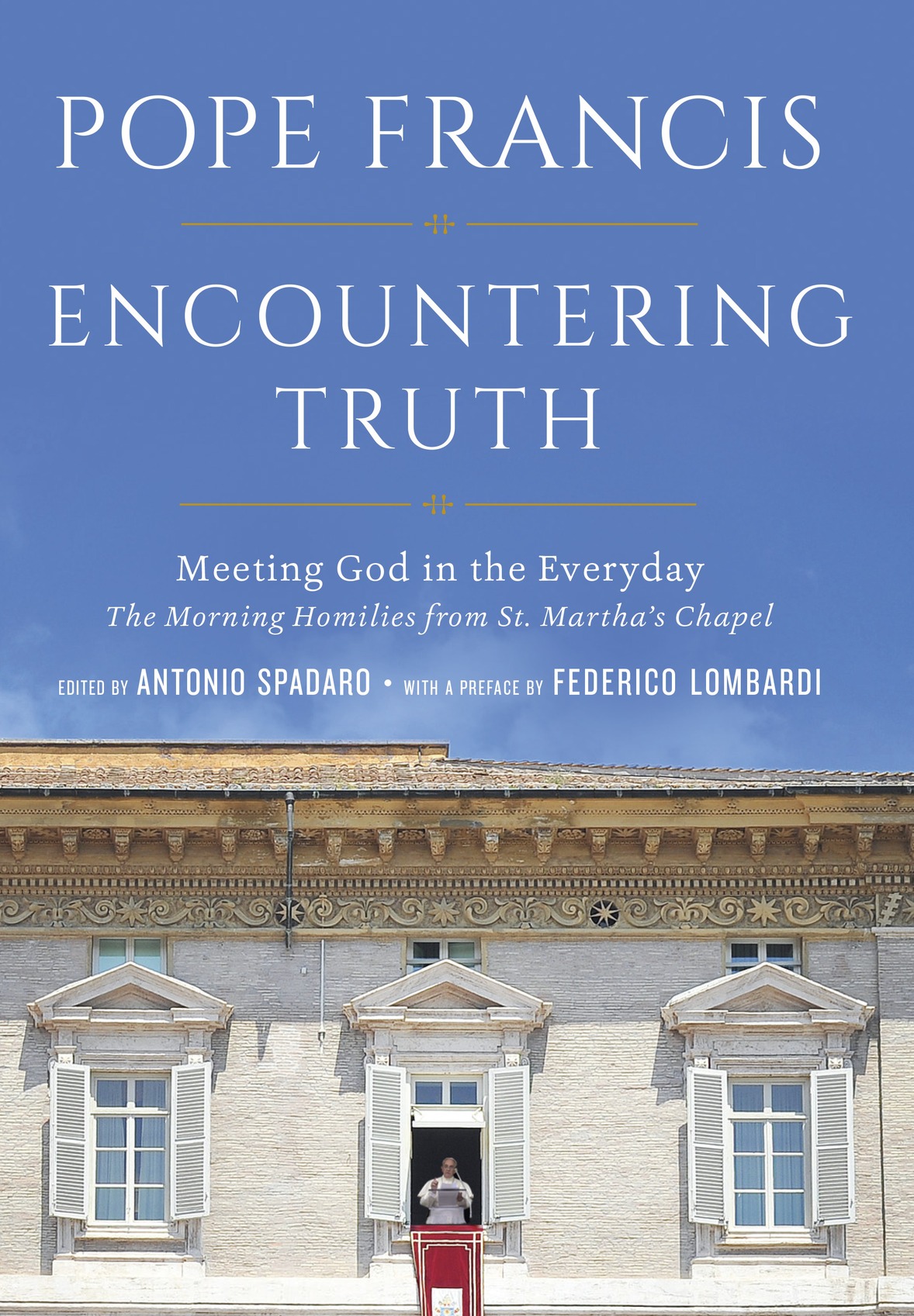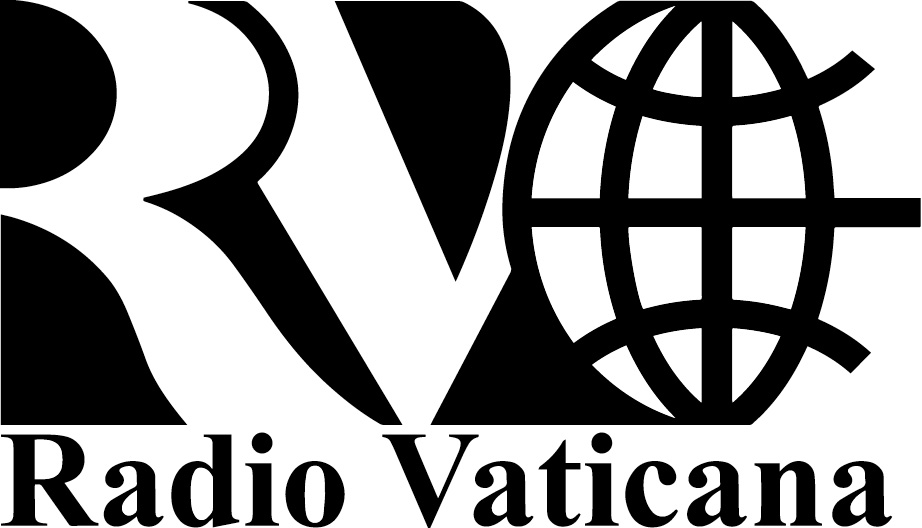All rights reserved.
Published in the United States by Image, an imprint of the Crown Publishing Group, a division of Random House LLC, a Penguin Random House Company, New York.
IMAGE is a registered trademark and the I colophon is a trademark of Random House LLC.
These homilies were transcribed by the staff of Vatican Radio and curated in particular by Sergio Centofanti, Alessandro De Carolis, and Alessandro Gisotti.
Library of Congress Cataloging-in-Publication Data is available upon request.
Preface
Truth is an encounter
In the very first weeks after the election, I thought that the morning Mass at Saint Marthas with a group of faithful and with the homily was one of the most characteristic aspects of the pontificate of Pope Francis. And I continue to think so.
His priestly and pastoral heart manifests itself in a daily relationship with the faithful in a communal Eucharistic celebration that is intense, meditative, and sober, in a certain sense austere without being barren. The personal hearing of the Word of God does not give way even for a moment to erudition or aestheticism, because it is immediately interwoven with the experience of concrete life and is aimed at ordering this according to the will of God, in the spirit of the Gospel.
Personally, every time I have been asked about the features of the pontificate in which I recognize the Jesuit spirituality of the pope, I have immediately thought of the Mass at Saint Marthas and his homilies. It was his way of celebrating and reading Scripture to which I related best and most spontaneously.
As Pope Francis explains in his apostolic exhortation Evangelii Gaudium, the way in which a priest gives his homilies says a lot about his interior and apostolic qualities, and this continues to hold true when this priest becomes pope. I have always said that I am a great admirer of the homilies of Pope Benedict XVI, especially those given at the big public celebrations. To me they are among the most precious texts of his pontificate; I have often called them sublime because of their harmonious and profound synthesis of theology, spirituality, and teaching of Christian life, their yearning and beauty, the splendor of the truth. A true aid in lifting the eyes and the soul up to God.
The daily homilies of Pope Francis are evidently of a different nature, as Fr. Antonio Spadaro explains in his introduction. They are the homilies of a son of Saint Ignatius, accustomed to helping souls to seek and find the will of God every day, looking to and following Jesus, who carries his Cross to save us, under the loving eyes of the Father.
For us at Vatican Radio, the homilies from Saint Marthas have been from the beginning an extra job that the new pontificate has required. Not the only one, of course! There are various extra jobs, but the morning homily is the first of these, because the microphones and recording equipment have to be ready in the chapel by 7:00 A.M .
The groups of faithful change every morning, but the engineers of Vatican Radio who accompany the celebration with their friends and colleagues of the Vatican Television Center and with the photographer of LOsservatore Romano are always the same.
After the Mass the recording is sent to the Italian news bureau, which is already working on the morning editions. Attentive ears, expert minds, and quick fingers make a first transcription available around 9:00 A.M . A journalist reads this carefully. I also read the transcription and rapidly compare my impressions with those of the journalist; we identify the main points, the passages most suitable for extracting in audio form for the listeners, and any expressions that may be less clear. The journalist proceeds to write a summary and select three or four audio clips. Sometimes he consults his fellow journalist at LOsservatore Romano who is working on a similar synopsis that will be published in the newspaper that afternoon. The definitive summary is sent to me for a final reading. Sometimes I am able to do this, but often I do not have time. Generally it is not necessary, because the popes thought is clear and the journalist knows his job.
Around 11:00 A.M . the summary of the homily is published in Italian on the website of Vatican Radio together with the audio clips. The news agencies have been waiting for it and immediately send out their first bulletins. In the meantime the different sections of Vatican Radio begin to translate the summary into their respective languages: English, French, Czech, Slovakian, Hungarian, Chinese, Hindi, Tamil, Swahiliabout thirty in all. Another journalist requests a video clip from the Vatican Television Center and posts it on the Vaticans YouTube channel.
All of the sections of Vatican Radio say that the homily at Saint Marthas is one of their most popular features and often the one most visited on their web pages. This means that the homily speaks to the mind and heart beyond cultural differences, to the different peoples on the different continents.
So although it may be an extra job for us, it is a welcome one, an added richness in the service we provide for our listeners, Internet visitors, and readers, setting apart what many call our service to the voice of the pope.
It is a shared labor in which various persons participate. If this book is being published now, it is because the engineers, secretaries, and journalists have performed this service with commitment and joy in order to spread the word of the pope or, better, so that with the popes help we may encounter Jesus.
Special thanks go to Sergio Centofanti, Alessandro De Carolis, and Alessandro Gisotti, who took turns preparing with intelligence and attention the texts that we are able to read here.
Federico Lombardi, S.J.
Director General of Vatican Radio
Introduction
The homilies from Saint Marthas
I
Saint Marthas, 6:30 A . M .
A group of persons approach the gate of Saint Marthas House, the dorm, as Pope Francis calls it. We are expected to arrive at 6:45. The early hour and the chill in the air sharpen our sense of anticipation, but the atmosphere is already meditative. We are all there to attend Mass with the pope. Not a solemn celebration at Saint Peters but a down-home Mass in the little indoor chapel. The gates open. The Swiss Guards help us with our coats and usher us into the chapel. The priests go to a room with a long table and many chairs, which are ordinarily used for holding jackets or purses. Two Vincentian sisters help the concelebrants put on surplices and stoles. There are a few bottles of water and plastic cups: a simple touch, but appreciated. Those who have come for Mass are already in their seats. Then the priests enter and sit down in the front row to concelebrate. The atmosphere is calm, and in fact everything seems completely normal.


